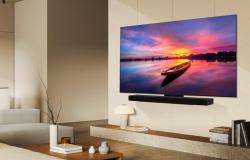Tired of artificial photos on your smartphone? Buying a camera opened my eyes: the race for the “wow” effect to the detriment of realism became more and more blatant.
Smartphone or camera?
The world of mobile photography is at a crossroads. On the one hand, users are looking for visually impactful shots: saturated colors, marked contrasts, generous exposures. An ideal rendering for social networks and to immortalize your memories without retouching. On the other hand, manufacturers emphasize the “Pro” and “Ultra” aspects of their on-board cameras: RAW shooting, LOG recording, professional modes and multiple lenses. A technological escalation which aims to convince us that the traditional camera is superfluous. In theory, there is something for everyone.
Based on this observation, I recently replaced my old SLR with a state-of-the-art model. Artificial intelligence, noise reduction algorithms, RAW shooting with Dual Pixel technology… So many features that we find, in one form or another, in our smartphones and which are often criticized for their tendency to distort reality. However, the experience with my new camera is clear: it is possible to integrate image enhancement software without sacrificing the naturalness of the photo.
Because there are two kinds of people, those who think that retouching is cheating and others who simply want to enhance the shot. This second category does not require making the photo artificial, naturalness often being the key word. Except that I will add that there is a third category, those who believe in AI-assisted editing. I found myself many times challenging myself to try to beat Google's AI in photography by taking my shot in JPG and RAW. Result: the AI wins almost every time. Not on the artistic rendering, but on many criteria which make a photo “pro”, starting with sharpness (sharpness).
I'm also not claiming that a phone can match the performance of a professional camera. However, if smartphones pride themselves on being “Pro” tools, their approach to photography should align with that of dedicated devicesand not move away from it.
The best camera is the one you have with you
The main pitfall of current mobile photography lies in the difficulty, if not the impossibility, of obtaining a high-quality, realistic image. An artificial limitation, because smartphone sensors and lenses are capable of much more. The problem comes from software processing. In their frantic quest to eliminate noise and boost contrast, manufacturers apply excessive smoothing which results in a “watercolor” effectparticularly visible when zooming in on the image. Runny details, erased textures, the result is far from living up to the potential of the material. Finally, it depends on the manufacturer all the same. This is where Google comes into its own. It is one of the most natural renderings, but which does not correspond less to the standards of social networks.
The use of third-party applications also reveals the extent of the damage. Much more natural shots are possible, but the image processing imposed by manufacturers deprives us of this. Skins with artificial tones, saturated yellows, excessively marked contours… these defects, present in all price segments, persist for several generations of smartphones among certain manufacturers who seek to race for megapixels. Of course, phones produce satisfactory images, but results close to those of professional devices would be possible with less aggressive software processing.
Taking inspiration from smartphones for our Pro devices
Modern cameras show us the way forward. Contrary to popular belief, artificial intelligence and software processing are not synonymous with artificiality. Noise reduction, for example, is an area where even entry-level cameras excel. New processors eliminate noise without degrading sharpness or creating a watercolor effect. A simple 100% zoom is enough to see the difference with a high-end smartphonewhere edges are artificially accentuated to hide the effects of smoothing.
Using HDR, which combines multiple exposures to achieve wide dynamic range, compounds the problem. The merging of the different shots accentuates the watercolor effect and the artifacts. However, a raw image, with a slightly adjusted exposure, would offer a much more natural and usable result. The solution is simple: less software processing.
The integration of artificial intelligence is another area where the cameras stand out. Instead of using it to modify the final image, they use it to improve the shot: subject tracking, efficient autofocus thanks to eye detection (a technology inherited from hybrid cameras), scene recognition, etc. AI is at the service of performance, not artificial aesthetics.
As long as manufacturers persist in their current approach to image processing, progress will be limited. It is time to rethink the philosophy of software and favor the natural over the artificial. User experience, color fidelity and rich detail must take precedence over superficial effects intended to flatter the eye on social media. A striking example is Samsung. Known for overdoing it in terms of saturation and contrast, the Korean manufacturer has recently returned to naturalness.
The future of mobile photography requires a more authentic and less interventionist approach to image processing, like what traditional cameras offer.






